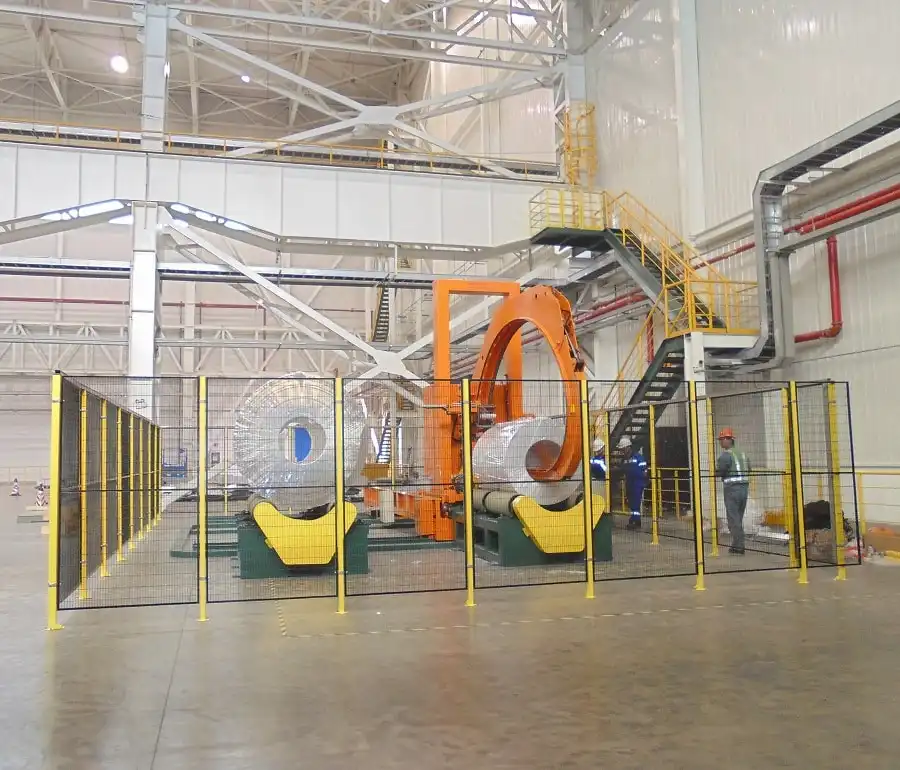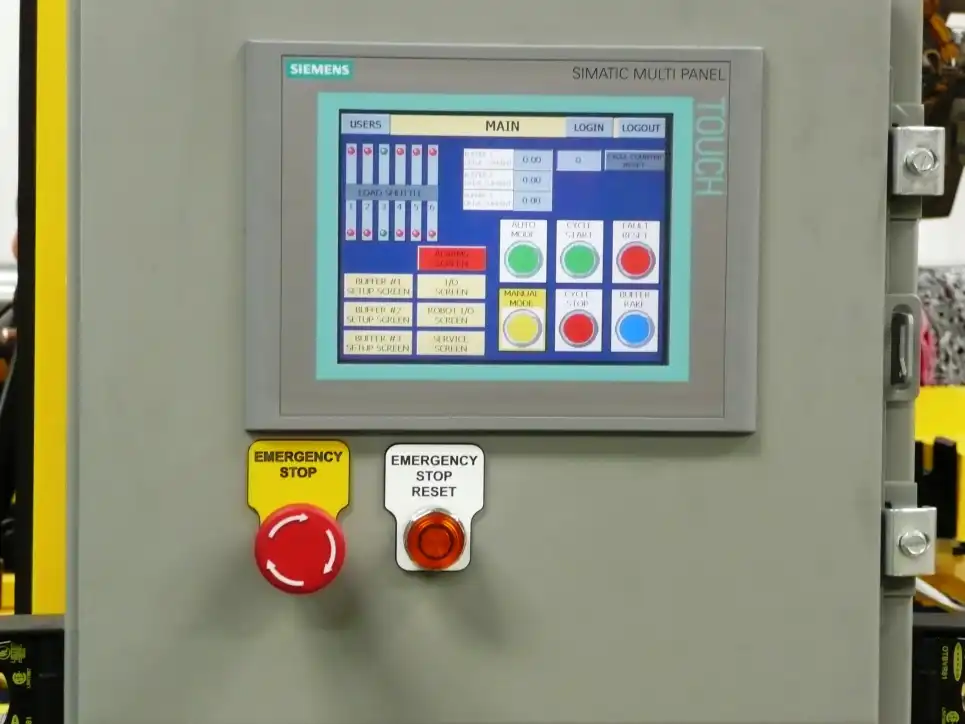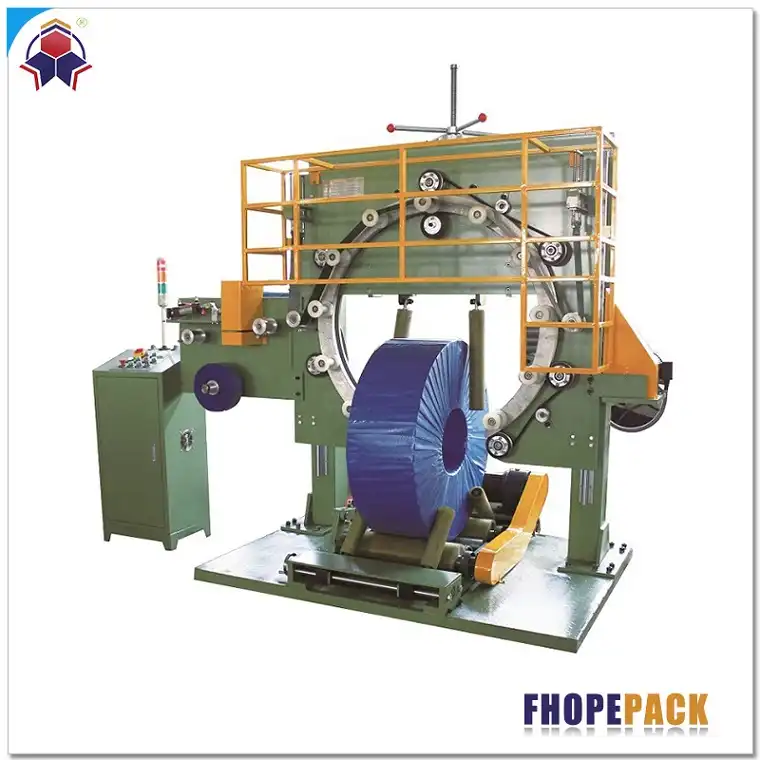In the realm of industrial manufacturing, the deployment of a steel coil packing machine is indispensable. As industries expand, so does their responsibility to the environment—a balance that must be carefully maintained. The usage of these machines impacts not only the efficiency of operations but also the surrounding ecological landscape.
The intricacies of employing such machines extend beyond their operational capabilities. They encompass environmental implications that necessitate a strategic approach to minimize negative effects. Manufacturers are increasingly aware of these considerations, striving to integrate sustainability into their production processes.
Claim: Eco-friendly innovations in steel coil packing machinery are pivotal to reducing the carbon footprint of manufacturing industries.
How Does a Steel Coil Packing Machine Impact the Environment?

1.1 Understanding the Environmental Footprint
Steel coil packing machines contribute to environmental changes through energy consumption and waste generation. As they operate, these machines require significant amounts of electricity, often sourced from non-renewable resources. This dependency highlights a pressing need for cleaner energy integration to mitigate adverse environmental impacts.
1.2 Energy Consumption and Emission Data
Energy consumption remains a critical metric in assessing environmental impact. Below is a table illustrating typical energy use by standard and energy-efficient steel coil packing machines:
| Machine Type | Energy Consumption (kWh/ton) | CO2 Emissions (kg/ton) |
|---|---|---|
| Standard Machine | 5.0 | 3.5 |
| Energy-efficient Machine | 3.0 | 2.1 |
1.3 Adopting Sustainable Practices
Industries are making strides towards sustainability by adopting energy-efficient models and renewable power sources. Transitioning to machines with lower energy requirements can significantly lessen environmental burdens. Furthermore, integrating solar panels or wind turbines provides an alternative to traditional electricity, fostering greener practices in industrial settings.
1.4 Waste Management and Reduction
Waste generated from packaging materials is another environmental concern. By utilizing biodegradable or recyclable materials, manufacturers can substantially decrease landfill contributions. The table below displays the decomposition rates of various packaging materials:
| Material | Decomposition Rate (Years) |
|---|---|
| Plastic | 450 |
| Biodegradable Plastic | 5 |
| Cardboard | 1 |
1.5 Two-Fact Statement
True Fact: Energy-efficient steel coil packing machines can reduce energy usage by up to 40%, leading to substantial environmental benefits.
False Fact: All packaging materials used in steel coil machines are environmentally friendly. In reality, many still rely on plastics that take centuries to decompose.
What Innovations Are Shaping Eco-Friendly Steel Coil Packing Machines?
2.1 The Rise of Technological Advancements

Recent technological advancements have ushered in a new age of eco-friendly steel coil packing machines. These innovations focus on reducing energy consumption, enhancing efficiency, and minimizing waste—all crucial elements in the global push toward sustainable manufacturing practices.
2.2 Technological Impact on Sustainability
Advances in automation and smart technology can drastically enhance machine efficiency. The integration of AI and IoT allows for real-time monitoring and optimization, reducing unnecessary energy expenditure. Below is an image depicting the interconnected nature of modern machinery systems:
2.3 Enhancing Efficiency Through Innovation
The development of machines with self-regulating capabilities ensures optimal operation, automatically adjusting settings based on material type and quantity. This not only conserves energy but also minimizes wear and tear, extending machine lifespan and reducing environmental impact.
2.4 Conclusion: Driving Toward a Greener Future
To achieve a more sustainable future, industries must continue embracing innovative solutions. Here’s a summary of key actions supported by numerical data:
| Action | Potential Impact |
|---|---|
| Switch to Energy-efficient Machines | Reduce energy use by 40% |
| Implement Renewable Energy Sources | Cut CO2 emissions by 60% |
| Use Biodegradable Materials | Lower waste generation by 70% |
By incorporating these strategies, manufacturers can significantly reduce their environmental footprint while maintaining operational efficiency.
Conclusion
The road to sustainable manufacturing is paved with conscious choices and innovative technologies. Steel coil packing machines, integral to many industries, must evolve to meet these environmental challenges. By adopting energy-efficient models, leveraging renewable energy, and prioritizing recyclable materials, the manufacturing sector can significantly diminish its ecological impact.
Final Claim: The transformation of steel coil packing machines into eco-friendly assets is not just an option—it is imperative for the future of sustainable industry practices.

